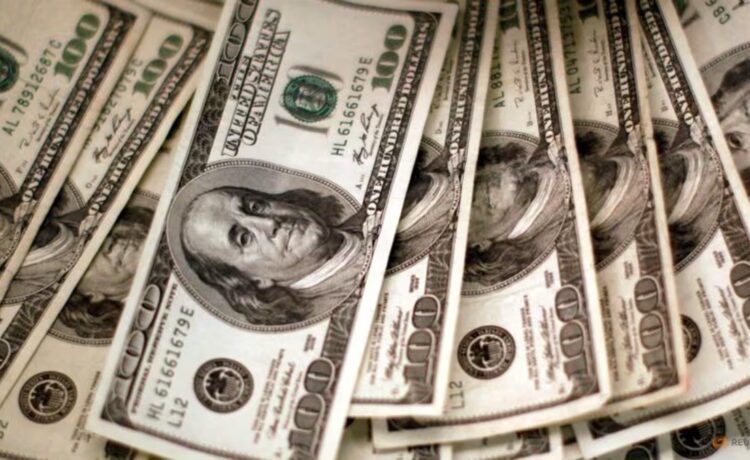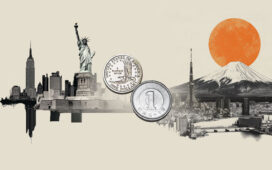NEW YORK :The dollar climbed to a fresh four-month high against the euro on Tuesday as divisions in the Federal Reserve raised doubt about the prospect of another rate cut this year, while a risk-off move sent investors seeking the U.S. currency for safety.
Meanwhile sterling tumbled after the UK finance minister pointed to “hard choices” in her upcoming budget.
Overall market sentiment was noticeably darker, with stocks falling and government bonds drawing demand, while safe-haven currencies like the yen and the Swiss franc held firm.
“I think it’s just an old-fashioned haven bid,” said Michael Brown, senior research strategist at Pepperstone, noting strength in both the dollar and the Japanese yen.
The euro fell for the fifth straight session, down 0.3 per cent to $1.148, its weakest since August 1. Against the yen, the dollar was 0.5 per cent lower, though the Japanese currency remained near a recent 8-1/2-month low.
“Despite all the column inches that ‘death of the dollar’ takes up, it does remain the best haven out there in the minds of market participants,” Brown said.
With investor risk appetite looking fragile, the Australian dollar was down 0.7 per cent at $0.6496, after the Reserve Bank of Australia left its cash rate steady as expected at 3.60 per cent and said it was cautious about further easing.
Cryptocurrency bitcoin was down 2 per cent to $107,486, its weakest since June.
DIVIDED FED
Tuesday’s dollar rise was an extension of the rally following last week’s Fed meeting, where the central bank cut rates as expected but Chair Jerome Powell suggested another cut in December was not a given.
Since then, Fed officials have offered competing views of where the economy stands and the risks facing it in the absence of economic data suspended due to the U.S. government shutdown.
Traders now price a 65 per cent chance of a rate cut in December, compared with 94 per cent a week earlier, CME FedWatch showed.
That shift in near-term expectations has boosted the dollar. The dollar index, which measures the U.S. currency against six others, topped 100 for the first time since early August and was last at 100.17.
POUND POUNDED
Sterling fell as much as 0.7 per cent to $1.3057, after British finance minister Rachel Reeves set out the difficult economic backdrop she was wrestling with, pointing to high debt levels, low productivity and stubborn inflation.
“Reeves’ remarks that her budget choices will focus on reducing inflation to prepare for rate cuts are likely to enliven the debate about a (Bank of England) move before year-end and will focus attention on this week’s BoE meeting,” Rabobank head of currency strategy Jane Foley said in a note.
“We would expect the pound to remain on the back foot heading into the November 4 policy meeting given speculation of a dovish tilt.”
YEN BOUNCE
The Bank of Japan’s decision to leave interest rates unchanged last week has offered the yen some much-needed support.
Still, the yen’s recent weakness prompted Finance Minister Satsuki Katayama to reiterate the government’s intention to continue to monitor currency movements with a high sense of urgency.
The yen is approaching levels at which Japanese authorities intervened to support it in 2022 and 2024.
U.S. President Donald Trump, who visited Japan last week, has frequently criticised governments that allow their currencies to weaken, arguing that it gives them an unfair trade advantage. This might mean Katayama will tread carefully, analysts said.




